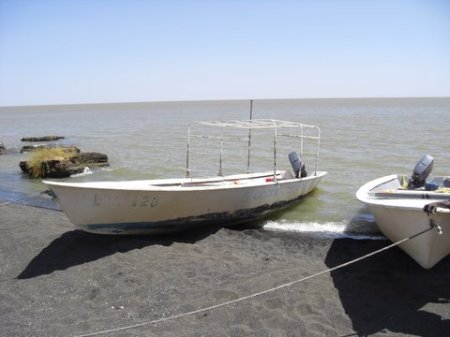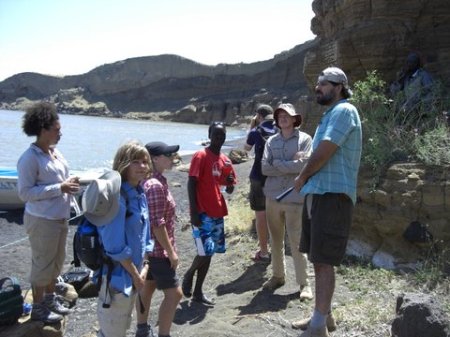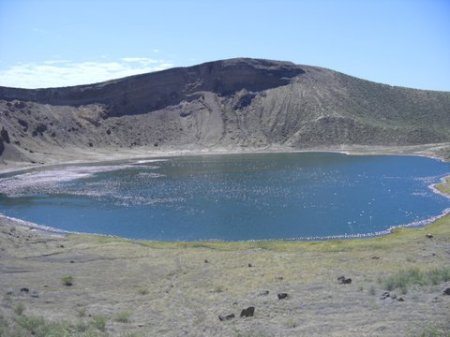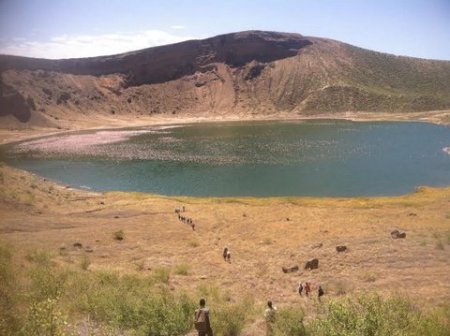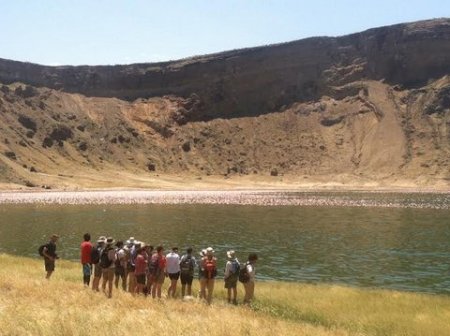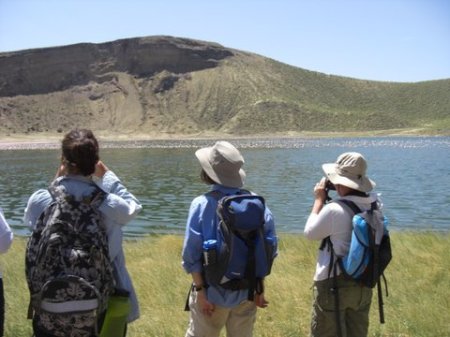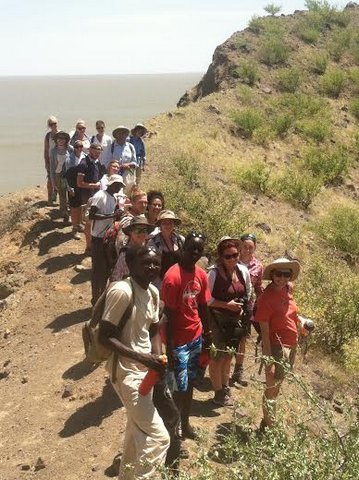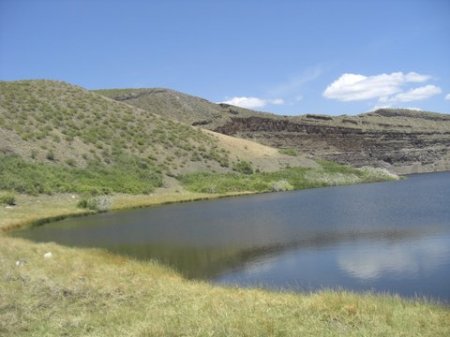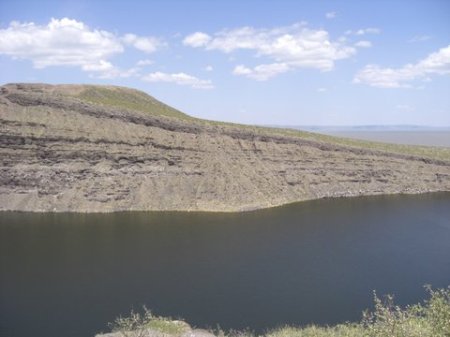This Sunday, Field School students took advantage of the day off with a trip to Central Island, an island in (you guessed it) the center of Lake Turkana. Both Dr. Martins and Dr. Lepre were on hand to offer ecological and geological expertise.
The day started off bright and early with a walk across the Turkwel River to meet the lorry. We drove to Kalakol to board the boats that would take us across the lake. After a refreshing hour on the water, we arrived!
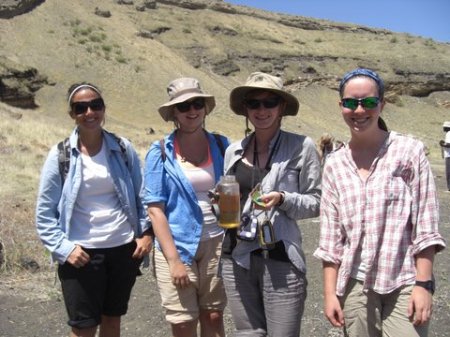
Tricia, Katie, Stacey, and Eloise are ready and eager to get hiking. Stacey dutifully drinks her rehydration electrolytes in preparation for a rousing day.
Central Island is a volcanic island with several craters, three of which have filled with rainwater over many years, forming three lakes: Flamingo Lake, Crocodile Lake, and Tilapia Lake. Our first stop was Flamingo Lake. We hiked up to the rim of the crater to look down on a beautiful blue-green lake dotted with pink flamingos – what a view!
We hiked down from the rim to get a closer look at the lake and its avian inhabitants. The lake is eutrophic, or nutrient-rich, and hosts a unique community of algae, plankton, and some invertebrates, including nematodes. No fish, however, live in Flamingo Lake.
Our next stop was Crocodile Lake. After a short lunch, we were ready for another hike. Unlike Flamingo Lake, Crocodile Lake is home to vertebrates – not only the famous reptiles in its name, but also to beautiful blue tilapia. There were several crocodiles in the lake, and a few eagle-eyed students saw one leap out of the water and snatch a bird out of mid-air! We hiked up a small slope to see the lake from above and catch a cool breeze.

